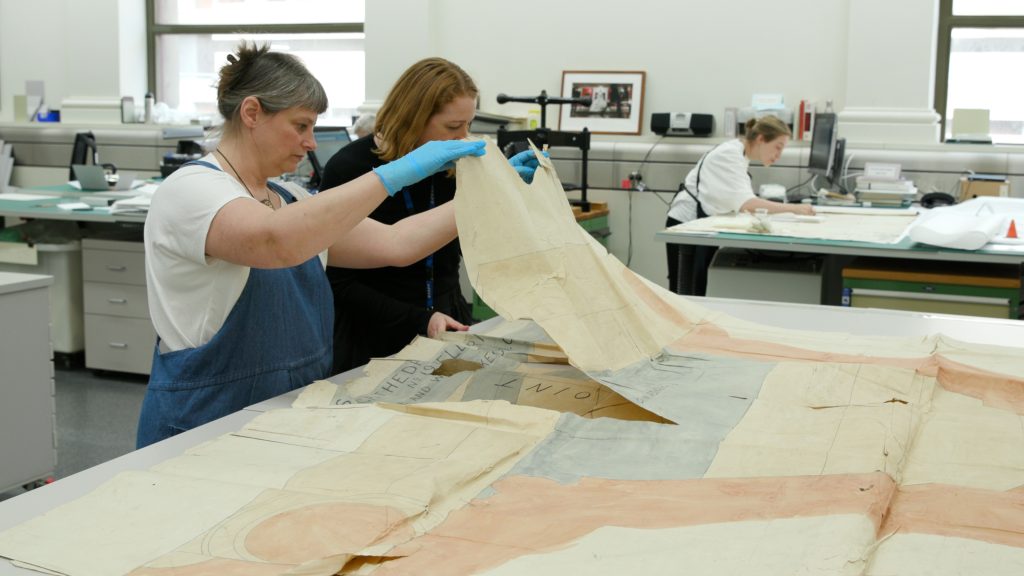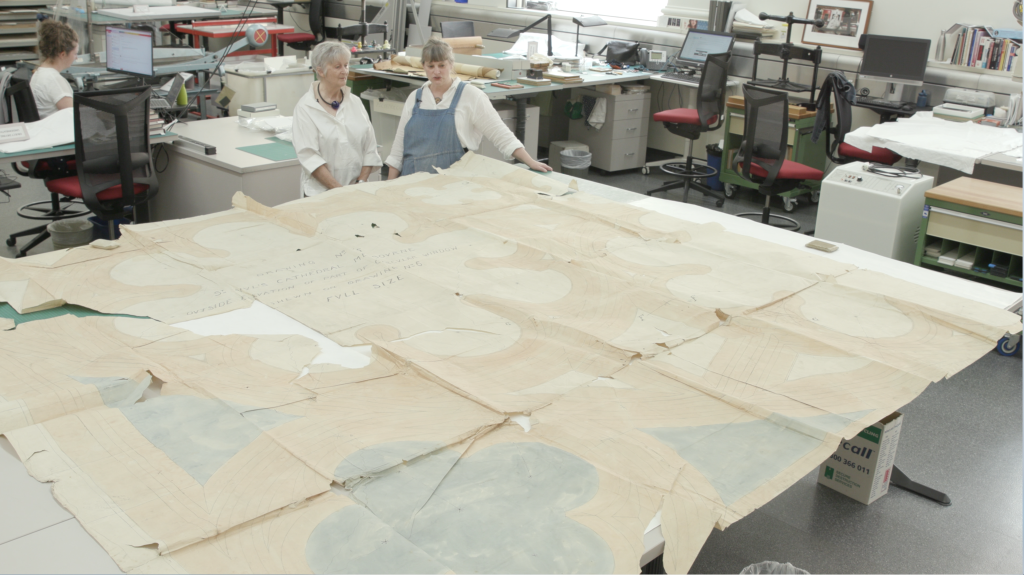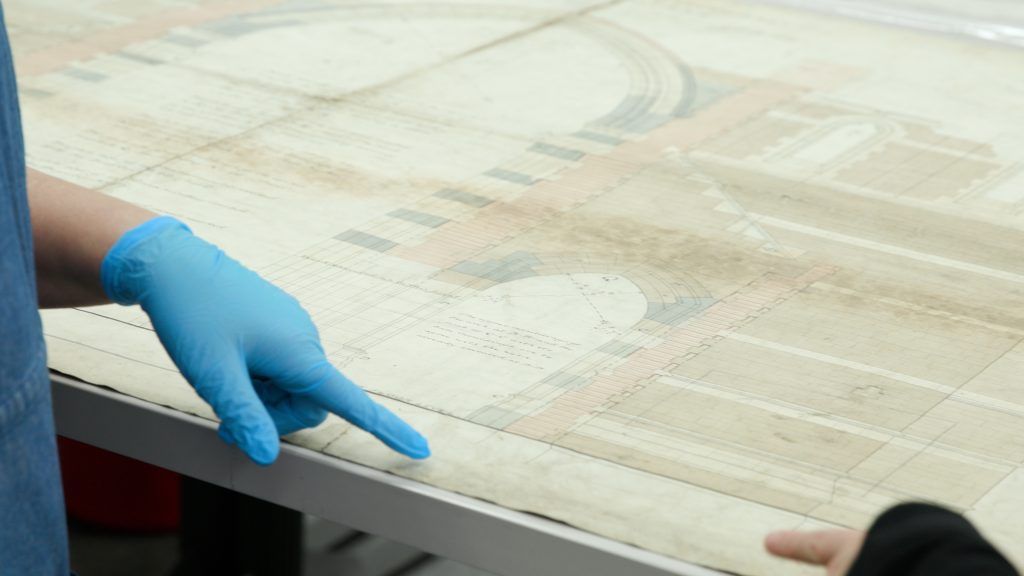The Library has been generously gifted English architect William Butterfield’s original drawings of St. Paul’s Cathedral, one of the city’s most iconic structures and his final masterpiece.
The funds raised for the Library’s 2022 End of Financial Year Appeal will allow us to undertake the conservation treatment of these extraordinary works and ensure the story of this architectural landmark lives on in the State Collection.
In this blog, Head of Collection Care Shelley Jamieson shares some insights on how the Conservation Team will approach the preservation of these extraordinary works.

St Paul’s is one of the most recognisable and iconic buildings in Melbourne and defines the cityscape for many Victorians.
The aim of this project is to ensure the long-term preservation and access to the drawings, which make up Butterfield Collection.
Preserving the plans
The Butterfield Collection is unique, ranging from small, detailed elevations of St Paul’s, through to enormous life-size plans of major stone details used to guide construction and the work of the stone masons. The inclusion and survival of such enormous drawings is rare, and makes this collection very interesting and challenging to conserve.
There are three main steps to the preservation of the Butterfield Collection. First the survey and assessment, followed by the conservation treatment program to stabilise and repair damage and deterioration, then the archival housing essential for their long-term preservation.
The conservation treatment approach for Butterfield is determined by a range of variables, including the size of the plan, the type of support (paper or textile), and the stability and solubility of the media (ink, watercolour or pencil). There is also a wide repertoire of techniques used by the Conservators when treating this collection.
Many of the plans measure several square meters and will require careful handling to prevent further damage. When fully unfolded they take up a substantial footprint in the conservation laboratory!

All the plans will undergo some form of cleaning and flattening, though the method for each one may vary. Many will be surface cleaned, taking into account that they are working drawings. Others with more advanced chemical deterioration may be washed – this could range from localised cleaning of stains, through to full emersion in a tailored washing solution. The conservators will also repair tears, and join sections that have been detached over time, and consolidate any unstable areas of media.
The storage of works of this size is also an important aspect for their long-term preservation. Many of the larger plans will be stored on archival rolls, but this is not an option with the enormous plans. These will need to be folded carefully and stored in protective sleeves, in climate-controlled storage.
Detailed information we find through the examination and treatment of the plans will be recorded and added to the growing description and knowledge of the collection.
On completion of the conservation program, the plans will then be catalogued and become available for public request. To request these works, you need to be a Library member, and place your request via the Library’s Ask a librarian service.
In the future, we hope to digitise the plans so that the public can view them online as well as in person – opening up access for all Victorians.


